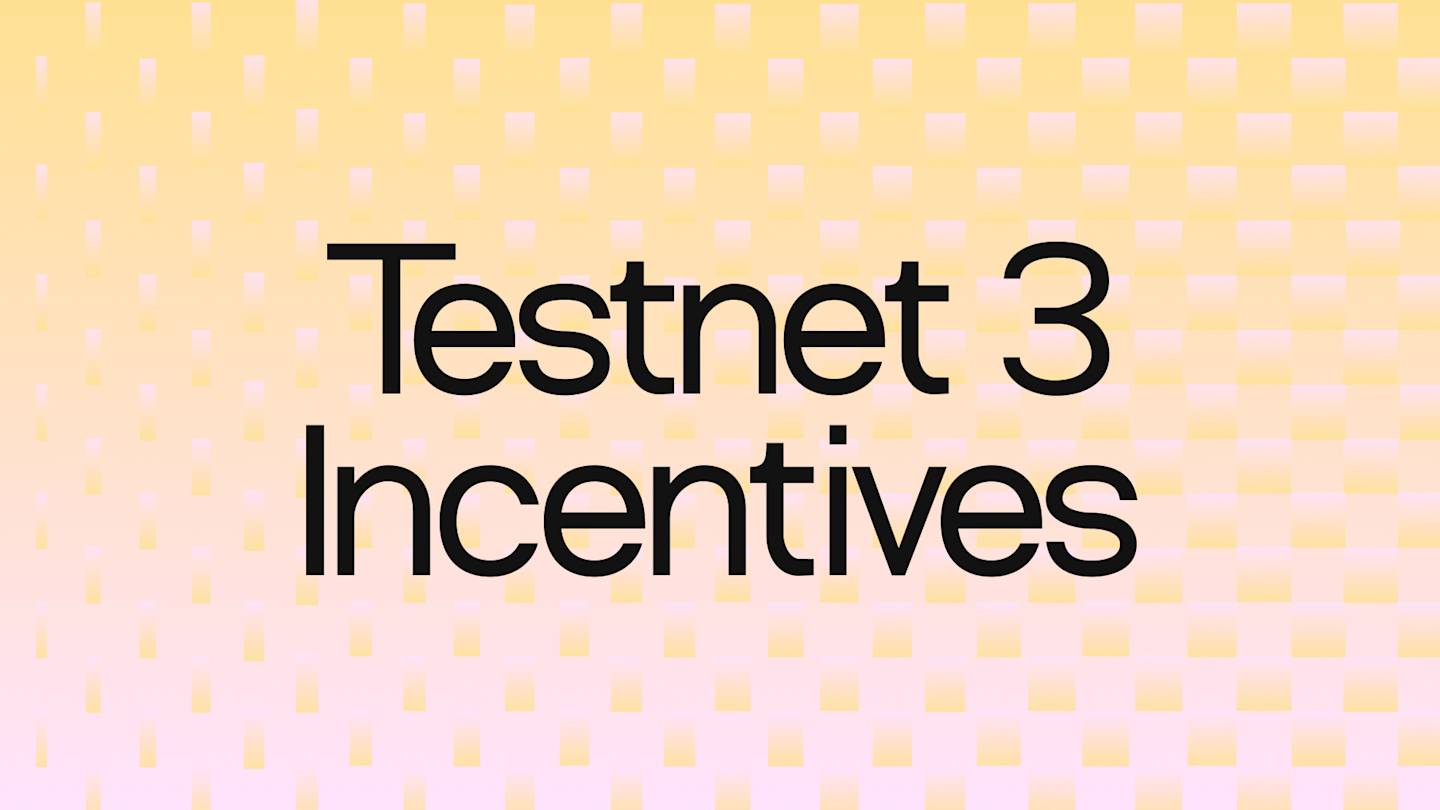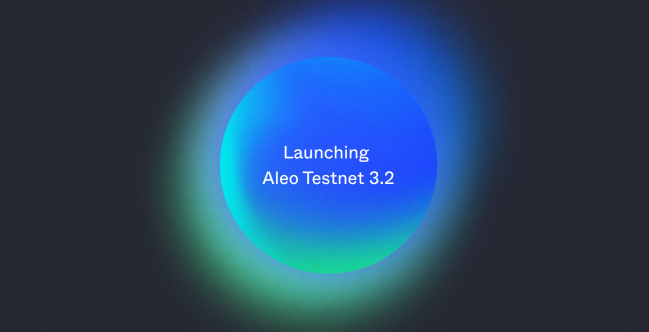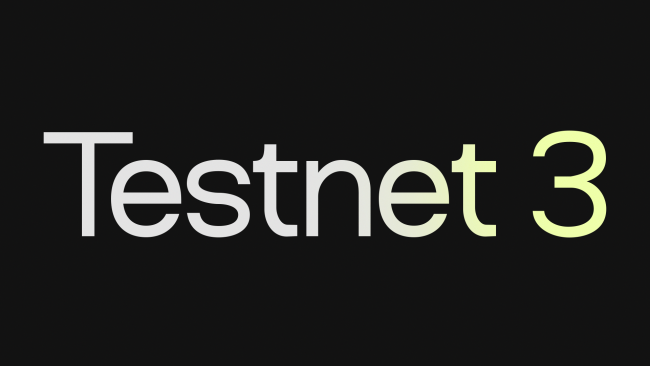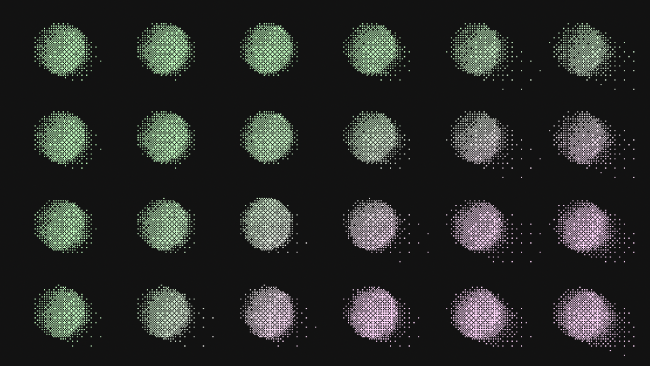Testnet 3 Incentives Kickoff

Incentivized Testnet Launch - Provers
Today, we are excited to announce the start of incentives for Testnet 3, which brings us one step closer to Aleo mainnet and supporting private, decentralized applications. We invite all of our community members to participate.
Testnet 3 marks a significant advance from Testnet 2. First, it brings a new consensus algorithm, AleoBFT, which combines a proof-of-stake consensus algorithm (based on DiemBFT) with a work-based compensation scheme for provers. We’ll be releasing more details about AleoBFT in the coming months. But the initial portion of the incentive program will focus on provers specifically.
The Role of Provers in AleoBFT
What are provers? In zero-knowledge cryptography, we have two interacting parties: a prover that generates a cryptographic proof and a verifier that checks that proof is correct without learning knowledge of its contents. To send/receive assets or interact with an application, a user must generate a zero-knowledge proof. For some use cases, we anticipate some users may outsource the proof generation process to some third-party proving service.
It’s important to note that outsourcing proof generation isn’t mandatory in our network, as it is in other networks like StarkNet. However, we anticipate an ecosystem of provers emerging on Aleo to support various applications. The beauty of this system is that it maximizes user choice in terms of which parties they choose to trust if any.
The Aleo network rewards provers directly from the protocol to bootstrap this ecosystem. In AleoBFT, provers can earn a portion of the coinbase reward for generating proofs like the original PoSW consensus algorithm. However, there are two crucial differences from how proving worked on Testnet 2.
Provers DO NOT produce blocks, but they do earn a portion of the coinbase reward from each block.
The coinbase reward is not winner-take-all. All the provers who contributed solutions for a given block above the minimum difficulty target receive a pro-rata portion of the reward.
The AleoBFT protocol uses a variant of the ASERT difficulty adjustment algorithm (the same as Testnet 2) to calculate two values: the proving target and the coinbase target. Prover solutions are accepted if they are above the threshold of the proving target. Once the sum of prover solutions is greater than the coinbase target, the coinbase reward is shared among provers that contributed valid solutions pro rata. Therefore, AleoBFT prover economics are similar to a mining pool on a traditional proof-of-work network.
As a tangible example, let’s imagine three provers: Alice, Bob, and Charlie. Let’s assume the coinbase target is 1024 and the proving target is 8. Let’s imagine for a 15-second period where one block is produced that:
Alice calculates and submits 80 PoSW proofs that are at least the proof target value of 8, for a total score of 640 (62.5% of the total)
Bob calculates 32 PoSW proofs that are at least the proof target value of 8, for a total score of 256 (25% of the total)
Charlie calculates 16 PoSW proofs that are at least the proof target value of 8 for a total score of 128 (12.5% of the total)
Alice, Bob, and Charlie would each receive a pro-rata portion (62.5%, 25%, and 12.5% respectively) of the coinbase reward for that block.
Calculating the Block Reward
We can calculate the coinbase reward according to the following formula:
R_coinbase = max(0, H_Y10 - H) * R_anchor * 2^(-1 * (D - B) / B).
R_anchor = Anchor reward.
H_Y10 = Anchor block height at year 10.
H = Current block height.
D = Time elapsed since the previous block.
B = Anchor block time.
So the starting Aleo token supply will expand via the coinbase rewards for about a decade, and they will decrease linearly by block over that timespan. We’ll release an updated mainnet tokenomics blog post soon with more details.
This same emission curve is in effect during the Testnet 3, with the genesis block being created on November 6, 2022. We will not reset the network at the start of the incentive period. So block rewards will be calculated during the incentive period based on the height of the network at the start of the incentive period (see below).
Token Awards for the Incentive Period
As mentioned in our prior blog post, we have set aside 25M Aleo credits for Testnet 3 incentives. Prover incentives account for 30% or 7.5M credits.
Credits earned during the prover incentive period will be redeemable for Aleo credits at mainnet launch at a rate of 5:1. That is, every five Aleo credits earned during the prover incentive period is redeemable for a single Aleo credit at mainnet.
The prover incentive period will run from December 2, 2022, at 0000 UTC to January 31, 2023, at 2359 UTC, or until the network has emitted 7.5M credits, whichever comes first.
If the 8-week period has elapsed, and less than 7.5M credits have been emitted, the Aleo team reserves discretion on how to allocate the remaining credits. If you were running a prover node prior to the start date, and are NOT using the provided scripts, please make sure you reset your node; otherwise you will not be able to earn incentives.
Conclusion
The Aleo team will be monitoring prover activity during the incentive period to identify anyone who may be trying to cheat the system. If you do not follow the guidance of our announcements, you will not receive rewards, and in general, the Aleo team reserves the right to withhold rewards from any individual for any reason.
Please note that these credits will likely be distributed at the time of mainnet launch. They are to be used as a payment mechanism for services on the Aleo mainnet. They are not investments or investment vehicles, and they should not be treated as such; their value is simply in their utility for mainnet functionality. By claiming your rewards, you represent, warrant, and acknowledge that you are:
not acquiring Aleo Credits as an investment and have no expectation of economic benefit or profit as a holder of Aleo Credits;
not relying on Aleo or any of its employees or representatives in any way;
not acquiring any equity or other ownership interest in Aleo by virtue of owning Aleo Credits;
not misrepresenting Aleo Credits as an investment or an opportunity to obtain an economic benefit or profit.
As with Testnet 2, the purpose of this public Testnet is to validate the technical architecture and security of the blockchain in a setting that is as realistic as possible. Aleo has already undergone several security audits, but we believe a large part of what makes decentralized consensus work is through intrinsic economic incentives.
To learn more about running a node and participating in the Testnet 3 incentive program, check out our snarkOS repository on Github. Thank you for participating in Aleo Testnet 3 and for helping us test the infrastructure for tomorrow’s private, decentralized platform for private applications!


